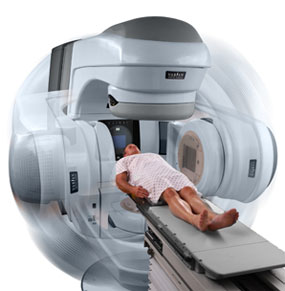
A BRIEF HISTORY OF VMAT:
“VMAT was first introduced in 2007 and described as a novel radiation technique that allowed the simultaneous variation of three parameters during treatment delivery, i.e. gantry rotation speed, treatment aperture shape via movement of MLC leaves and dose rate.”
STAGES IN THE DEVELOPMENT OF VMAT:
“The earlier form of arc therapy, termed intensity modulated arc therapy (IMAT) was first described by Yu in 1995 [26] and required the use of multiple superimposed arcs to achieve a satisfactory dose distribution [42]”
“There are two main forms of arc-based therapies: tomotherapy and volumetric modulated arc therapy (VMAT). Tomotherapy (i.e. “slice therapy”) machines can be considered to be a combination of a CT scanner and a linear accelerator that can deliver the radiation in a fan-shaped distribution, similar to CT imaging with a continuously rotating radiation source, while the patient is moved through the machine. Tomotherapy techniques can be subdivided into axial or serial tomotherapy (where the radiation is delivered slice by slice) or helical tomotherapy (HT) (where the radiation is delivered in a continuous spiral) [30–33]. There is limited data on axial tomotherapy in comparison with fixed field IMRT. HT has been evaluated in a variety of tumour sites and it can generally achieve either similar or improved dose distributions compared with fixed field IMRT, with variable results on treatment time comparisons [34–40].
PIONEERS IN THE DEVELOPMENT OF VMAT:
Arc therapy involving dynamic field shaping using a multileaf collimator was first described by Takahashi in 1965
1982, Brahme et al solved an integral equation for a hypothetical target wrapped around a critical structure and treated with arc therapy .
. In 1983, Chin et al proposed and demonstrated that with computer
optimization and the freedom of computer-controlled gantry rotation, collimator motion and dose-rate variation, highly conformal dose distribution can be achieved.
In 1992 Convery and Rosenbloom derived the mathematical formula for realizing intensity modulation with the dynamic movement of collimator .
In 1993, another form of IMRT using rotational fan beams, called Tomotherapy, was
proposed by Mackie et al
“In 2008, Otto designed an optimization algorithm to deliver IMAT in a single-arc manner, which he called volumetric-modulated arc therapy (VMAT).5 In VMAT delivery, both dose rate and gantry rotation speed can vary. These additional degrees-of-freedom increased the capability of beam intensity modulation.”
REFERENCES:
https://www.ncbi.nlm.nih.gov/pmc/articles/PMC3473700/
https://my.clevelandclinic.org/-/scassets/images/org/cancer/health-info/varian-rapid-arc-img.ashx
https://pubmed.ncbi.nlm.nih.gov/30387550/
https://my.clevelandclinic.org/health/treatments/17626-volumetric-modulated-arc-therapy-vmat
https://academic.oup.com/jrr/article/60/5/603/5506810
https://www.sciencedirect.com/topics/medicine-and-dentistry/volumetric-modulated-arc-therapy
https://onlinelibrary.wiley.com/doi/full/10.1111/iju.14011
https://www.nature.com/articles/s41598-017-14629-w.pdf?origin=ppub